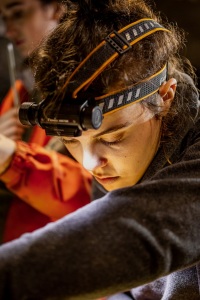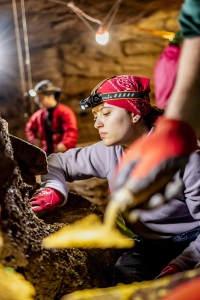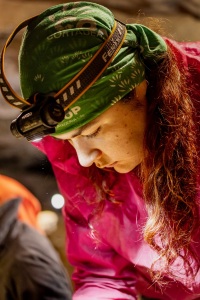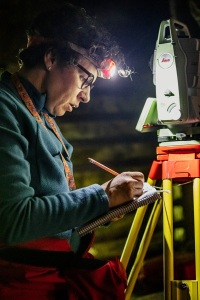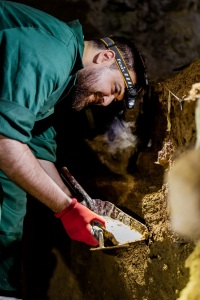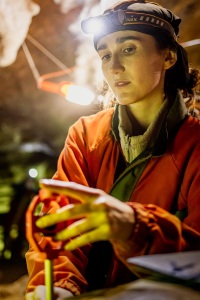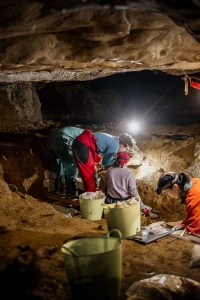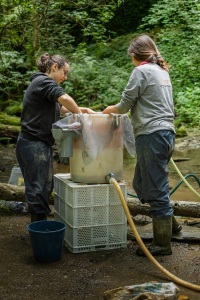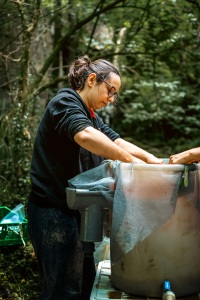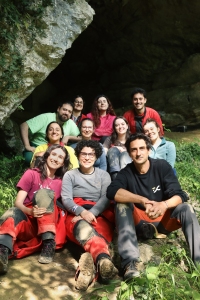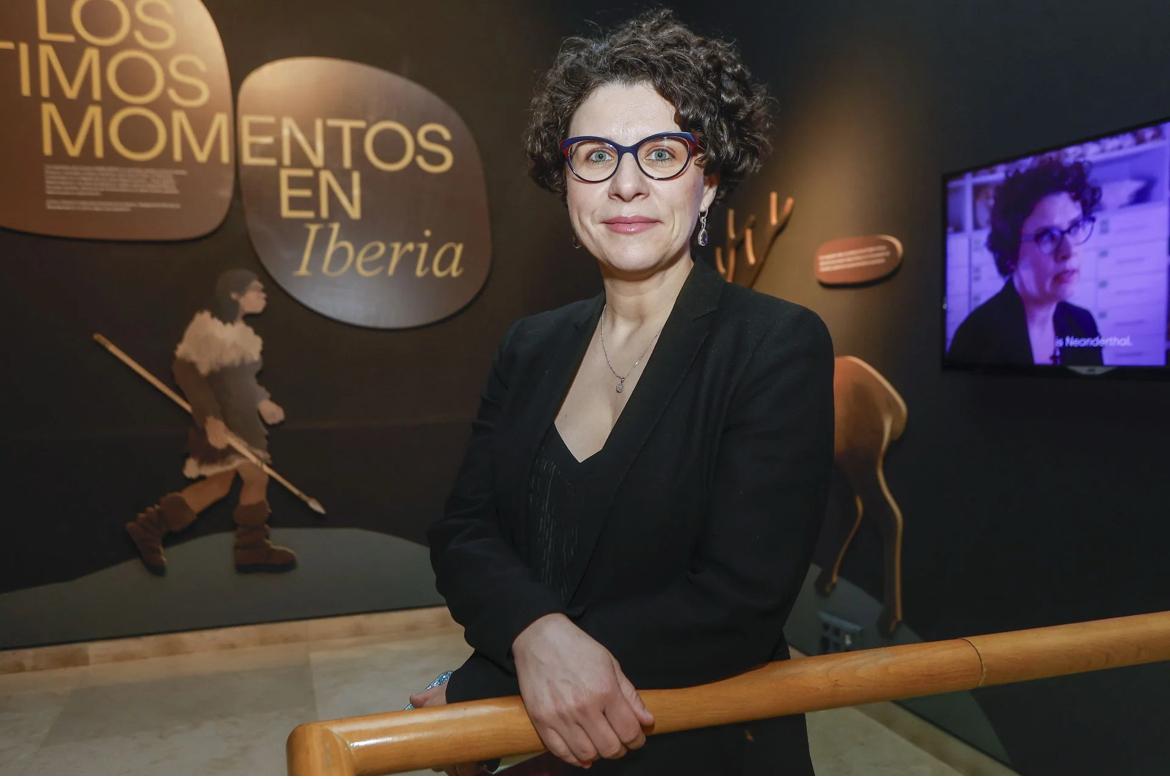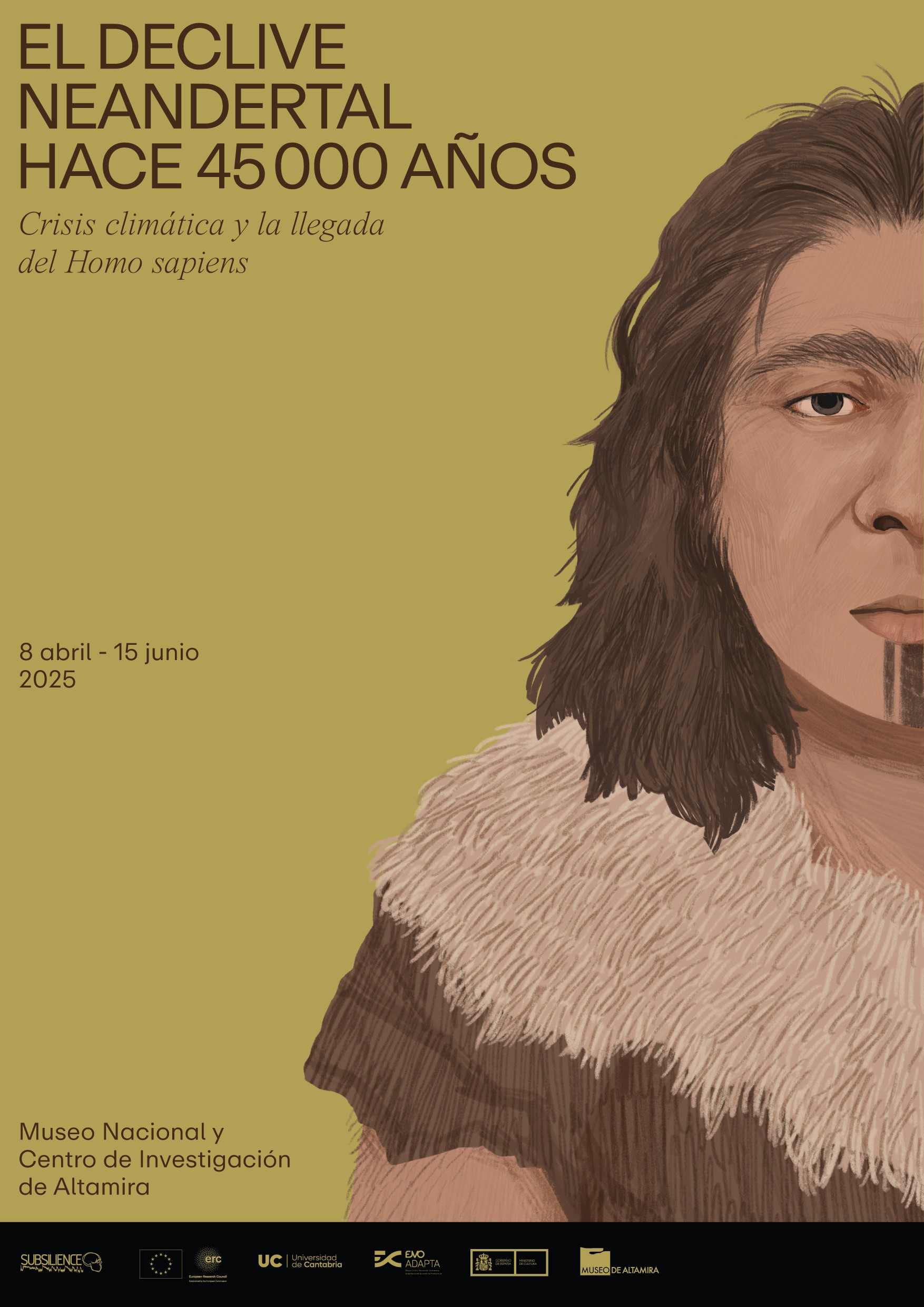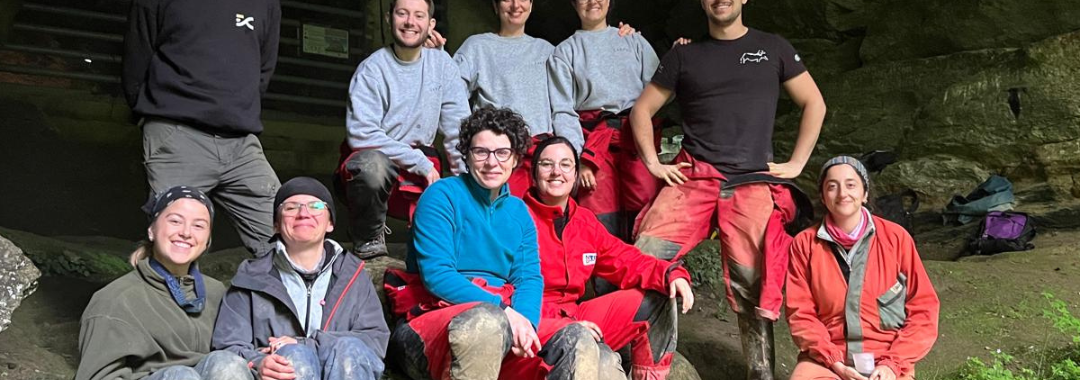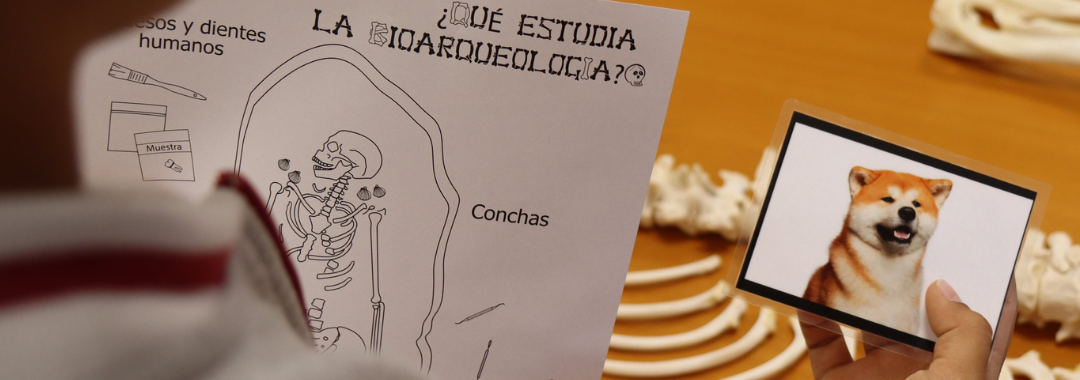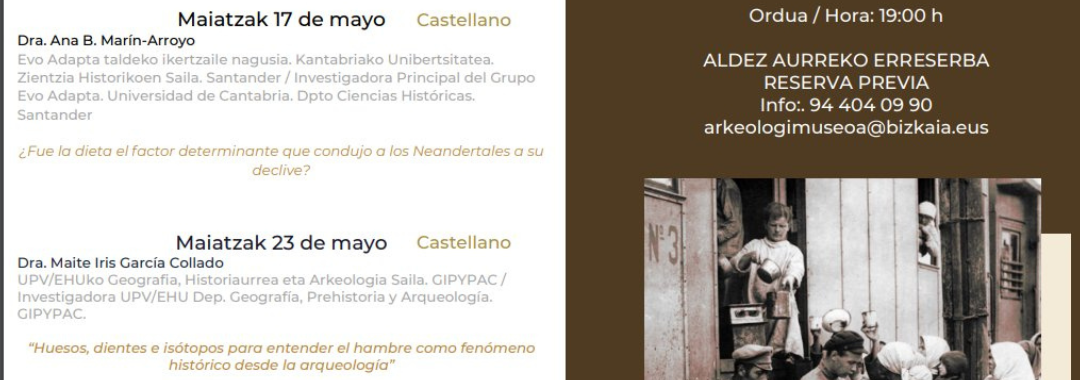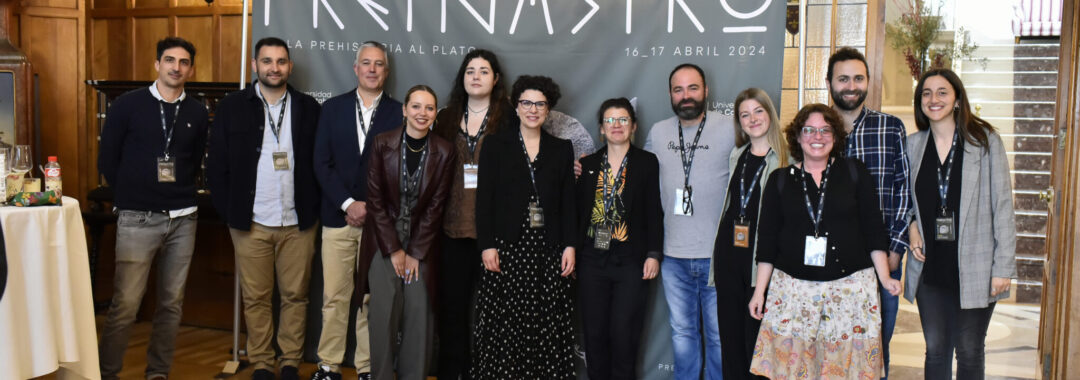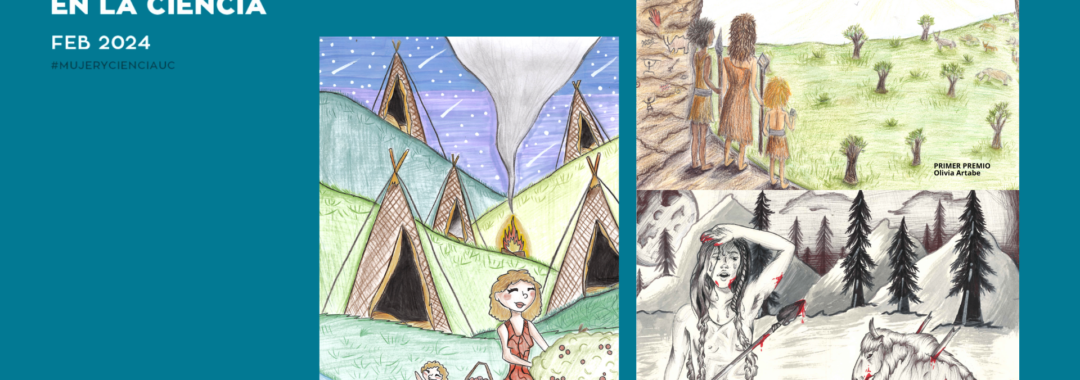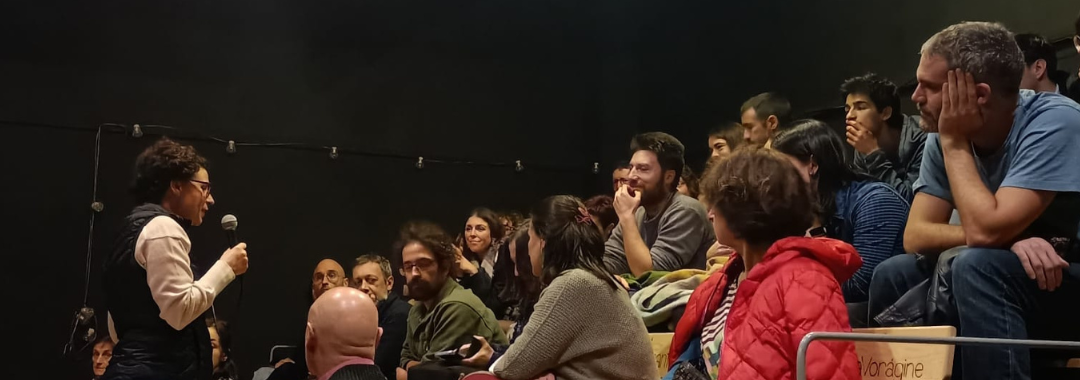The first edition of the archaeogastronomic congress “PREHGASTRO: From Prehistory to the Plate” was held at the Palacio de la Magdalena in Santander on April 16 and 17. The initiative, co-organized by the EvoAdapta research group ans the ERC Subsilience project of the University of Cantabria (UC), the Marketing Intelligence group (UC), and the Ronquillo Restaurant (Ramales de la Victoria – Cantabria), achieved its goal of transferring scientific knowledge obtained by EvoAdapta researchers about prehistoric diets in the region. This was accomplished through five scientific lectures focusing on terrestrial meat, marine, and plant diets, the origin of dairy products, and key health aspects of Prehistory.
The debates following each lecture, featuring a panel of professionals from various disciplines, connected this knowledge with the current dietary and gastronomic reality of Cantabria. The event served as a unique meeting point for communicators and gastronomy enthusiasts, cultural heritage experts, archaeologists, researchers, nutritionists, producers, and chefs who explored the origins and evolution of food in Cantabria from the past to the present.
FIRST DAY: MEATS, FISH, AND VEGETABLES
The event’s inauguration was presided over by the Mayor of Santander, Gema Igual; the Regional Minister of Culture, Tourism, and Sport of Cantabria, Eva Guillermina Fernández; the Vice-Rector for Research and Scientific Policy of the University of Cantabria, Carlos Beltrán; the Director of the Office of Food Quality (ODECA), Juan Luis Centeno; and the Principal Investigator of the EvoAdapta research group at the University of Cantabria (UC), Ana B. Marín-Arroyo.
The first scientific lecture, titled “The Prehistoric Stomach,” was given by Ana B. Marín-Arroyo. Following the talk, EvoAdapta researcher Lucía Agudo moderated the round table “THE GRILL,” a debate on the consumption of animal protein in gastronomy, featuring experts from academia, gastronomy, and business such as the president of IBERTUR, Jordi Tresserras; the Associate Professor of Prehistory at the University of Salamanca and director of LABTEC USAL, Olivia Rivero; the gastronomic journalist, Rosa Rivas; the Commercial and Marketing Director at CANTUR S.A., José Ramón Álvarez; the chef of Ronquillo Restaurant, David Pérez; and the director of the National Museum of Altamira Research Center, Pilar Fatás.
Regarding her participation, Fatás noted about PREHGASTRO: “For me, the multidisciplinary approach has been the key to the success of this congress; the synergies generated will surely result in highly creative and scientifically rigorous gastronomic proposals. It has been a long time since I participated in a congress with such clear practical application, pure knowledge transfer.” During this first day, the director of PARADORES, José Carlos Campos Regalado, attended as an invited guest, also praising the event’s originality and sustainability: “This project is the zero kilometer of zero kilometers, both in product and in preparation and cooking! Gastronomic culture viewed from the origin, with rigor and science.”
The afternoon session began with a lecture by Marie Skłodowska-Curie researcher at EvoAdapta-UC, Alexandre Lefebvre: “Unearthing Depths, Spines, and Whales.” The scientific talk, focused on prehistoric marine diets, continued with the debate “A Thorn in the Side,” discussing the current use of the marine environment and sustainable fish consumption. Participants included the chef and owner of La Casona del Judío, Sergio Bastard; the Director of Marketing, Communication, and Innovation at Grupo Consorcio, Eduardo San Filippo; the PhD in Biological Sciences, Gerardo García-Castrillo; the professor in the Department of Geography, Urban Planning, and Land Management (UC), Juan José González Trueba; the gastronomic journalist Jorge Guitián; and the president of the Cantabria Rural Tourism Association, Jesús Blanco.
The last scientific lecture of the day was given by the archaeobotanist and CSIC Research Professor, Leonor Peña-Chocarro, under the title “Chewing the Root and the Origin.” She explored the plant elements that were part of the prehistoric diet, from seeds to fungi. The subsequent panel, titled “Raw,” addressed the issue of plant proteins today and the use of plants in contemporary cuisine, featuring participants such as El Diario Montañés journalist, Jose Luis Pérez; the innovator at the Basque Culinary Center, Blanca del Noval; the researcher at the CIDAF Technological Center, Ana Lemus; the farmer and gatherer from El Jardín del Cocinero, Raúl Díez; and the chef and writer, Iolanda Bustos. This chef, who advocates the use of flowers in cooking, emphasized that cuisine is a channel to explain the landscape and territory. “In gastronomy, people seek to be moved and go to the origin. I try to create edible landscapes with flowers. We are denaturalized and disconnected,” she added.
SECOND DAY: DAIRY AND HEALTH
“Down to the Last Drop,” the session led by the University of Valladolid researcher, Borja González-Rabanal, transported the audience to the Neolithic to explore the gradual introduction of dairy into the human diet from Anatolia to Europe, revealing the impact of this new food on prehistoric societies.
This was followed by the round table “The Blend: Dairy Today,” moderated by gastronomic communicator Claudia González. The debate brought together experts in cooking, anthropology, communication, and artisanal cheese making to discuss the contemporary relevance of dairy, highlighting sustainable projects and culinary innovations. Participants included the anthropologist and director of the Department of Historical Sciences at the University of Cantabria, Eloy Gómez-Pellón; the specialist in communication, health, and gastronomy, Carmen Ordiz; the owner of La Lleldiría cheese factory, Sarah Hart; the chef and gastronomic communicator, Antonio Vicente; and the president of the Spanish Network of Field and Artisan Cheese Makers (QueRed), Chema Alonso.
This round table emphasized the consumption of local and seasonal products, connected with food sovereignty and territorial identity that translates into gastronomy. The manager of the Local Action Group Valles Pasiegos, Ana Manrique, invited as an audience member, noted that “PREHGASTRO has demonstrated that when the University approaches the endogenous resources of our rural environment, initiatives of high value emerge to support sustainable development processes, with the ability to generate very positive impacts on the social and economic growth of the territory based on local values.”
The last scientific dissemination session was led by the Ramón y Cajal researcher at the Madrid Museum of Natural Sciences, Almudena Estalrrich-Albo, under the title “Sustaining the Body: Teeth, Organisms, and Well-being.” Estalrrich shared how teeth, as fossil records, reveal vital information about health, diet, and daily life in the past. PREHGASTRO culminated with the round table “The Good and the Bad Sip,” moderated by Ángel Herrero, Professor of Marketing at the University of Cantabria. This discussion reflected on the current role of food in a globalized world, questioning whether we truly know what we eat, with guests including the specialist doctor in Endocrinology and Nutrition at the Marqués de Valdecilla University Hospital (HUMV), Luis Alberto Vázquez; the doctor in Archaeology and university professor, Sandra Lozano; Professor of Physical Anthropology at the University of the Basque Country, Sandra Lozano; the doctor in Biotechnology and scientific communicator, Ricardo Moure; and the chef at Cenador de Amós, 3 Michelin Stars, 2022 National Gastronomy Award, Jesús Sánchez. The chef closed his participation in the debate saying: “We are what we ate and we should not lose this tradition.”
LIVE COOKING: BITES INSPIRED BY PREHISTORY
Considering the knowledge acquired during the scientific lectures at PREHGASTRO, once the variety of prehistoric diets in the region was unraveled, four Cantabrian chefs bridged the gap between the past and the present by fusing Prehistory with contemporary cuisine. They used ingredients like venison, fruits, cereals, milk, and salmon to create four “living cuisine” bites that exemplify the scientific knowledge transfer from the EvoAdapta group to professionals in other disciplines.
Alex Ortiz, from Pan de Cuco restaurant (Suesa), honored the terrestrial meat diet with a venison toast, plum, and flowers, reminding us that long ago, before meat dominated our tables, flowers and fruits were the protagonists of our diet. The marine diet was represented in this gastronomic connection by chef Samuel Fernández from El Remedio restaurant (Ruiloba), who prepared a salmon taco accompanied by a bone marrow emulsion with hazelnuts and wild asparagus.
The plant essence, captured by Miki Rodríguez from Umma restaurant (Santander), materialized in a bite where the apple served as a vessel for a wild mushroom broth with pine oil, accompanied by the top of the apple, used as a spoon, holding a filling of cereals, roots with a touch of hazelnut miso, and cherry soil. Finally, Tamara Zubillaga from Romy restaurant (Bádames) delighted the guests with a curd of raspberries accompanied by a millet cookie, a tribute to the dairy products also discussed at the PREHGASTRO congress.
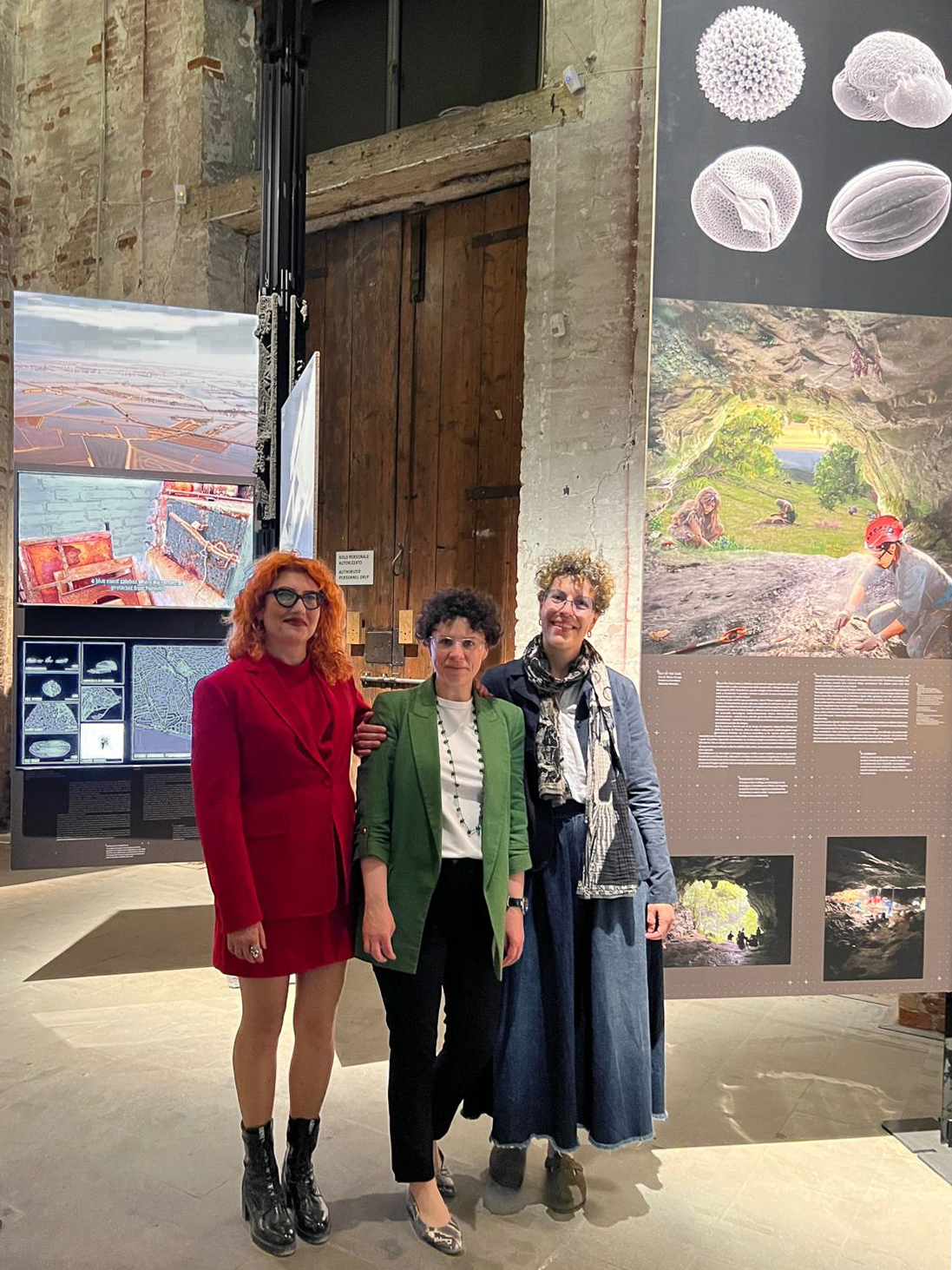

 From 1 to 14 June 2025 the EvoAdapta group (University of Cantabria), with the
From 1 to 14 June 2025 the EvoAdapta group (University of Cantabria), with the 